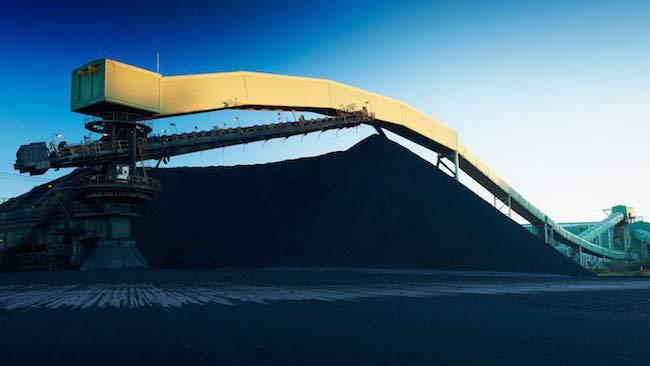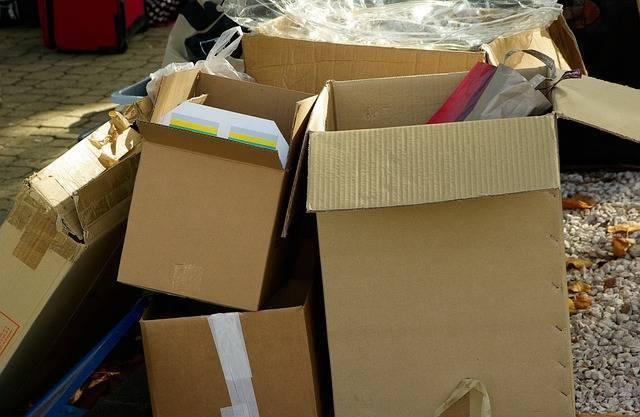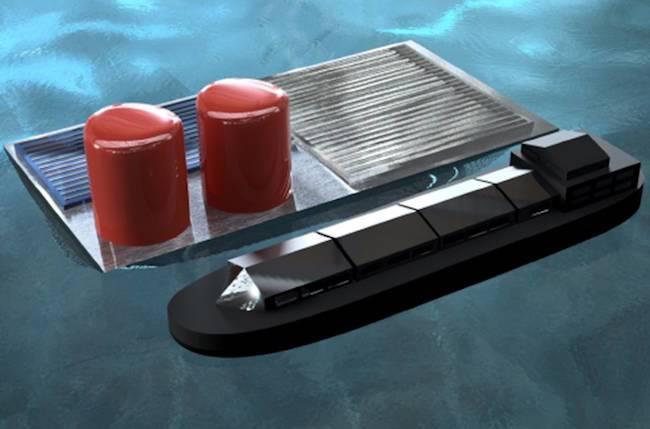Trump Stands Alone: Global Coal Giant Affirms Climate Change


ExxonMobil made waves across the blogosphere last week when it criticized the influential lobbying group ALEC for thwarting action on climate change -- even though the company is itself an ALEC member. Now it looks like a leading global coal company is coming over to the "green" side, too. Earlier this week, global mining giant BHP Billiton warned the U.S. Chamber of Commerce and two other coal-friendly organizations that it will pull its membership over their failure to link energy policy with climate action.
The move further isolates President Donald J. Trump in his position denying the scientific consensus on climate change. His unstinting efforts on behalf of the U.S. coal industry include withdrawing the US from the Paris Agreement on climate change, making it the only nation on Earth refusing to participate in the historic accord.
BHP Billiton, coal and climate change
Does BHP's warning to coal organizations mean that it is giving up on coal? Not really -- no more than ExxonMobil is giving up on shale gas. However, it does signal that competition is heating up over the shrinking space for fossil fuels in the low carbon economy of the future, and diversified companies are more than willing to push their coal-dependent competitors off the cliff.
To be clear, BHP's current focus is on carbon capture and emissions reduction, not the death of coal. In a new report that supports its decision to put pressure on coal trade organizations, the company explains:
Fossil fuels are an affordable, reliable and accessible way of meeting energy demand and they currently provide more than 80 per cent of the world’s primary energy. Under all current plausible scenarios, fossil fuels will continue to be a significant part of the energy mix for decades.
Nevertheless, BHP is equally clear that it accepts the scientific consensus on climate change and supports the Paris Agreement on climate change:
BHP accepts the Intergovernmental Panel on Climate Change’s (IPCC) assessment of climate change science, which has found that warming of the climate is unequivocal, the human influence is clear and physical impacts are unavoidable...As a result, responding to climate change is a priority Board governance and strategic issue for BHP.
BHP may be underestimating the swiftness of the global transition to clean energy, but at this point it is still reasonable to assume that fossil fuels will continue to play a role in the global economy for the foreseeable future.
The company argues that economic development and climate goals should be firmly entwined. It's a more climate-aware version of the clumsy "energy poverty" argument typically advanced in support of coal. BHP advocates for coal and change at the same time:
...the world must find ways to significantly improve energy efficiency, reduce emissions from the use of fossil fuels and increase the share of alternative energy sources such as renewables, batteries and nuclear power...
Aside from putting pressure on trade organizations, the Australia-based company is also putting its money where its mouth is. BHP cites a track record of emissions reductions efforts going back to the 1990's, and this year it announced a new carbon capture and sequestration research collaboration with the University of Melbourne, Cambridge University and Stanford University.
Diversification wins
If major trade organizations bend towards BHP's will, that means more trouble for companies that rely exclusively on coal. On its part, BHP already has a diversified position that should enable it to weather a rapid transition to a low carbon economy.
Carbon capture and sequestration may not be the answer (carbon recycling is more promising), but BHP has already made its first move into utility scale solar plus storage, through participation in the Lakeland Solar and Storage Project in Queensland. If all goes well, BHP could leverage the project for a deeper dive into renewables:
Outcomes of the extensive test program will provide insight for BHP and the resources sector in general, and the results of the project will be shared widely. At the same time, we continue to evaluate the integration of renewable energy sources into our own operations, together with incumbent energy sources to provide the appropriate mix of system reliability, emissions reduction and lowest cost.
BHP also has extensive interests in natural gas and copper, an element that has renewable energy applications across the board including solar, wind and hydropower (just ask The Copper Alliance!).
In other words, the company is in position to ramp up other operations if and when its coal business winds down.
As for ExxonMobil, the company plunged into the shale gas market several years ago and hasn't looked back. It's no coincidence that low cost natural gas has been the driving force behind a torrent of coal power plant closures in the U.S.
The Pressure is on
In its new climate report, BHP took aim at the World Coal Association and the Minerals Council of Australia as well as the U.S. Chamber of Commerce. The World Coal Association has already pushed back, claiming that BHP misrepresented its position on climate and energy policy.
A WCA spokesperson cited the organization's website as proof of its good intentions on climate change. The same could be said of the U.S. Chamber of Commerce, which updated its position on climate change in October:
Climate change is a serious challenge that needs to be addressed through thoughtful policies that will have a meaningful impact. The Chamber supports efforts to reduce greenhouse gas emissions and believes technology and innovation offer the greatest potential to reduce emissions and mitigate the negative impacts of climate change.
That update could reflect the outcome of a years-long fight over climate change and renewable energy within the organization -- or it could just be more hot air.
Leading global companies have already defected from the Chamber and/or the influential lobbying organization ALEC in recent years, and BHP could be next in line.
Photo: via BHP.
A “Click-and-Ship” Holiday: How Retailers Can Ensure Sustainability in an E-Commerce World


By Ian Lifshitz
Year after year, the craziness of the holiday shopping season draws Americans and their wallets back in. This year, American consumers say they will spend an average of $967.13 on holiday gifts – a 3.4 percent increase from last year. Of those purchases, chances are high that many will be not be purchased in a brick-and-mortar store, but online.
While 86 percent of Americans buy gifts for friends and family as part of celebrating Christmas, nearly a quarter feel wasteful when thinking about buying and receiving gifts. Furthermore, according to a survey by Asia Pulp & Paper, packaging waste, specifically, is considered an important issue by half (51 percent) of all Americans.
And it’s not just gifts for friends and family that will be shipped. Americans will turn to digital channels to order decorations and household goods, like faux Christmas trees and holiday dinnerware directly to their homes and offices, and even ship beverages and groceries to their homes to avoid crowded grocery stores.
With increased gift spending and waste top of mind this holiday season, consumers and retailers alike should consider the waste involved when someone chooses to “click and ship.”
What should retailers consider when packaging an increasing number of consumer goods and groceries this season?
Since customers are the heart of every business, successful companies keep their preferences and expectations top of mind. When it comes to e-commerce, an important area to look at is packaging.
More than half of all consumers (52 percent) agree that the packaging of delivery items is often much larger than the item itself, according to Asia Pulp & Paper’s 2017 Paper & Packaging Consumer Trends Report. Furthermore, 48 percent of consumers said that stores need to be a better job of sending delivery items in packaging that better fits the product’s size and reduces waste. To reduce end users’ worries, retailers can look closely at the logistics of shipping. Are they grouping multiple items in one order or sending out in several boxes? And how closely are they monitoring the way items are packaged to ensure the box is the right size for the order?
Four in 10 consumers (41 percent) also believe in the importance of using sustainable, recyclable, or environmentally friendly packaging for delivery items. This means retailers should ensure their packaging materials are sustainably sourced and certified.
Beyond being environmentally friendly, at the end of the day packaging has a job to do. It needs to be functional and protect goods that are being delivered. During the holiday season, many consumers ship gifts cross country to friends and family they may not get to see in person. Broken goods, beat up boxes and spoiled grocery deliveries ultimately hurt a brand’s bottom line – besides having to replace the product, the experience can unintentionally wound customer loyalty.
Knowing that functional yet sustainably sourced packaging is important to consumers, brands face a unique challenge not just during the holiday season, but year-round. Knowing what customers want and expect when it comes to e-commerce packaging can help put retailers one step ahead in the arms race to win over online holiday shoppers’ business.
Ian Lifshitz is Vice President of Sustainability & Stakeholder Relations, The Americas, Asia Pulp & Paper Group.
Seawater and Solar Could Solve the Sustainable Hydrogen Fuel Problem


The news for hydrogen fuel cell vehicles has been something of a mixed bag lately. Last month Honda's Clarity became the first ever fuel cell electric vehicle to make the Top Ten Engines list from leading industry researcher WardsAuto. In the same month, though, the headlines were full of dire news suggesting that interest in fuel cell EVs is about to fall off a cliff.
So, what to make of all this? One challenge for hydrogen fuel cell EVs is the fuel itself. Natural gas is the main source for hydrogen, and that's a significant handicap. However, sustainable sources are beginning to emerge. In the latest development, a team of researchers at Columbia Engineering has introduced a concept for large scale, low cost hydrogen production using seawater as a source.
Why floating seawater-to-hydrogen?
The basic idea behind the new system is electrolysis, which refers to "splitting" water with an electrical current and a catalyst.
Until recent years pure water was required, and the electricity would typically lean on conventional sources including coal, natural gas and nuclear.
For the past several years, though, researchers have been deploying solar and wind energy to provide a current for splitting seawater, sewage, and other impure sources.
Once you have seawater-to-hydrogen in hand, the next logical step is to develop a system that can float in the seawater itself.
There are several advantages. The most obvious one is that the facility is located at the sources, so no energy (pumps, etc.) is required to transport the seawater to a watersplitting facility.
In the U.S., high populations are concentrated along coastlines, so a floating facility would generate fuel fairly close to a high demand market. That also cuts down on energy related to transportation.
A floating facility would also help resolve land use issues for crowded coastal areas.
Because seawater is the water source, there is also no competition for water resources needed for agriculture, domestic or industrial uses (or, for that matter, environmental conservation).
Getting the H out of H2O -- with bubbles!
The Columbia Engineering system demonstrates all three advantages, with the added -- and essential -- benefit of low production costs.
The new system is being shepherded by Daniel Esposito, an assistant professor of chemical engineering who has been focusing his research team on solar-powered electrolysis.
Here's the rundown from Columbia Engineering:
Esposito’s team has now developed a novel photovoltaic-powered electrolysis device that can operate as a stand-alone platform that floats on open water. His floating PV-electrolyzer can be thought of as a “solar fuels rig” that bears some resemblance to deep-sea oil rigs, except that it would produce hydrogen fuel from sunlight and water instead of extracting petroleum from beneath the sea floor.
To cut costs down to the bone, the research team zeroed in on the membrane required by the latest generation of high efficiency electrolyzers. The membrane is needed to keep the hydrogen and oxygen gasses apart.
The Columbia Engineering solution was to jettison the membrane altogether. Instead, the new device leverages the buoyancy of bubbles.
The basic concept is simple. The electrolyzer, sans membrane, is submersed in seawater. Once an electrical current is applied, the device generates bubbles of hydrogen and oxygen gas. Then the magic happens:
The generated H2 bubbles are harvested within the interior of the device as they float upwards, while O2 bubbles are allowed to vent to the atmosphere.
The devil, of course, is in the details. The electrolyzer catalyst is a key factor, so one challenge was to design a new catalyst that separates the hydrogen and oxygen bubbles as they form.
Without the need for a membrane, the system takes a shortcut around one of the major durability challenges for submerging devices in seawater.
As for the electrical current, the floating rig is festooned with photovoltaic cells, providing an ample supply of electricity during daylight hours. Add energy storage, and the system has the potential to operate 24/7.
Biomimicry to the rescue
If all this is beginning to sound like photosynthesis, you're on to something. Plants deploy sunlight to produce the building blocks for growth. Natural photosynthesis evolved over millions of years. The new solar-powered hydrogen system, and others like it, represent the application of science to duplicate that same creative power within a generation.
First author on the new study Jack Davis explains:
These solar fuels generators are essentially artificial photosynthesis systems, doing the same thing that plants do with photosynthesis, so our device may open up all kinds of opportunities to generate clean, renewable energy.
So far the new electrolyzer has passed its workout in "artificial" seawater -- basically, a tailor-made salty solution. Next steps include immersing the device in actual seawater, where all sorts of unexpected variables could pop up.
Modular-izing the design is another goal, which would help with scalability and construction costs.
For more details about the Columbia study, look up “Floating Membraneless PV-Electrolyzer Based on Buoyancy-Driven Product Separation” in the Journal of Hydrogen Energy. For the record, in addition to Esposito and Jack Davis, the study authors are Jonathan Davis, Ji Qi, Xinran Fan and Justin Bui.
To keep up with the latest from Esposito's research team, check out the Solar Fuels Engineering Laboratory at Columbia Engineering.
Image credit: Justin Bui / Columbia Engineering.
Trump Administration Says Employers Can Decide Who Gets Workers' Tips


The Trump administration's latest concept as to how to bolster the economy: Giving businesses the legal right to take away the tips that restaurant servers earn.
It's the age-old bane of restaurant servers: Trying to balance enough income from the tips that they earn and the regulated wage that employers are permitted to offer. And if a "tip credit" rule proposed by the Trump administration goes through, that struggle is going to become all the more difficult.
Many states permit employers to offer restaurant servers less than the state's minimum wage, rationalizing that servers get tips, and that money should account for part of their wages.Others, like California, have laws in place protecting the right of the employee to receive at least the state minimum wage in addition to their tips. That's in part, because the minimum wage rarely is sufficient these days to cover the cost of living.
Mandatory tip pooling: the research
And in states where mandatory tip pooling in a business is considered legal (some states, such as California, have laws that protect the employee's right to keep the tips he or she earned) companies can require servers and other tipped employees to turn over their tips to the boss so they can be "fairly" distributed among all of the workers in the service line (bus boys, cooks, as well as servers) who contributed to making that tip possible.
But according to research conducted by the National Employment Law Project, in employment settings where the boss had the final say over what happens to an employee's tips, it wasn't guaranteed that those service line employees would actually receive the gratuity. More than 10 percent of workers surveyed for the report Broken Laws, Unprotected Workers in 2015 reported that the companies held their tips rather than distributing them among the service line fairly (which was illegal under federal law).
What is more, researchers were able to draw a correlation between workers at risk for other violations (requirement to work overtime without proper compensation, fear for their job if they had an accident on the job, etc) and settings in which workers reported later that their tips had been stolen by the employer.
The findings have, among other things, raised questions about whether allowing employers to have the final say in how gratuities should be put to use, especially when under the proposed rule, there are no legal requirements for the employer to account for distributing pooled tips at all. Despite its well-meaning defense of back-kitchen workers on service lines, the proposed rule seems to miss a key point, which is to legally require employers to redistribute the tips to employees and not to keep them. According to the Economic Policy Institute's math, the proposed rule would allow employers to have access to as much as $5.8 billion in tips. And it is for that reason -- not the concept of pooling gratuities -- that opponents are offhandedly referring to the rule as legalizing "tip stealing."
Potential economic impact for small businesses and communities, too
But the proposal leaves some other huge questions open as well. And these don't just impact employee rights. They have the ability to affect local economies as well.
Many restaurant servers will confess that earning tips is an incentive to applying for their particular job. In many states, it's disposable income in the pocket and it gives the employee the feeling of more control over their day-to-day finances.
So will skilled workers be as willing to fill hospitality jobs if they can't trust whether they will receive their tips? What's the incentive for a server or bartender to work for, say, a classy, upper-end restaurat if the employer can decide how much gratuity he or she will receive?
A restaurant's reputation is vital to staying in the black. And chronic job vacancies can spell the death to a business' reputation if they affect customer service. Will restaurants really benefit if they are faced with long training hours for inexperienced or new employees because experienced servers feel they have lost their earning potential?
And how does a law that upends the protections for those who are often the lowest paid but most essential to a sustainable tourism industry help bolster today's economy? Will cities and states really benefit from adding more insecurity to the work environment?
The answer to this last question is best found in today's ever-evolving employment laws. Since the 1980s, more and more states have realized that providing access to a living wage is not only good for the employee, it's good for the economy. It creates incentive and it results in more money in the pockets of small business owners in the form of profits.
If anything, the proposed law would create more insecurity and inequity between workers and make it harder to ensure a stable, incentivized and trained workforce.
Still, there are some limitations to the rule under consideration: It does not affect those states that prohibit tip pooling. It would also only affect workers who earn at least the equivalent of the federal minimum wage through tips and wage.
The proposed changes to the Fair Labor Standards Act is up for public comment until February 3. The comment period has been extended from 30 to 60 days due to an unexpected "backlash" against the proposal, which has incited a debate in Washington over just who should have the right to decide who is entitled to a worker's tips.
Flickr images: torbakhopper
Highlights of 2017: 3p’s Year in Review


It has been quite a year indeed. A new presidential administration has been tearing down the policies of the previous one at a rapid clip. Natural disasters, from hurricanes to wildfires, have displaced thousands of citizens and further highlighted the risks climate change could exact on the planet.
Yet there is plenty of positive news, even if these bright spots come from a dark place. As we have watched the past couple months, equality in the workplace is moving closer to reality as many high-profile executives, politicians and celebs have lost their jobs and the power that came with them due to past misconduct. Meanwhile, as the White House’s current occupants are reversing course on environmental and social policies, companies are picking up the slack.
Based on how our readers responded to our coverage, here are our picks for the top sustainability and corporate social responsibility stories of 2017.
Coal keeps hitting the skids
President Trump has made reviving the coal industry one of his top priorities, but market forces continue to hasten coal’s decline. Many projections assume solar will displace coal as a top electricity producer within a few years, and one of the world’s largest investment firms succinctly predicted this fossil fuel’s future: “coal is dead.” Of course, that is not stopping the U.S. coal industry from trying to find new markets overseas. Yet, in one of our most-read stories this year, 3p’s Tina Casey explains that in addition to more coal-fired plants closing and the bankruptcy of another major coal producer, coal miners are confronting another problem: the Trump White House keeps trying to gut federal regulations that seek to ensure their safety.
Going meatless means big bucks
Plant protein has become even more mainstream with consumers, as ingredients including pea flour, beet juice, coconut oil and hemp are churned into meat alternatives. And investors are seeing potential; at least $250 million dollars flowed into these companies by the end of this summer. Meanwhile, even large meat producing countries such as Canada are suggesting that their citizens consider more plant-based protein options in their daily diet.
Companies step up
Never mind the political headwinds coming out of Washington, D.C.: companies are charging ahead with their sustainability agendas, even if the murkey reality for now is business as unusual. More of the world’s largest corporations are supporting the United Nations’ Sustainable Development Goals (SDGs), and they are approaching them not as philanthropy, but as a fundamental business strategy. At least 1,400 companies now put an internal price on carbon, and are doing so to manage long-term risks as well as identify new market opportunities. The results have not been just mere talk, but often action. Salesforce, for example, recently announced it achieved its net-zero carbon goals 33 years early. Watch for more bold plans, such as Mars Inc.’s September announcement that it will eventually invest $1 billion in climate change and sustainable supply chain strategies.
The fight to displace plastics is on
Plastics continue to flow into our oceans unabated, and more organizations realize that current efforts are akin to taking a pen knife into a gun fight. Much of this fight, however, will still depend on consumer education. That’s why many of the most popular U.S. aquariums are banding together to fight plastic pollution. And as more studies have suggested that a certain grade of plastics previously believed to be harmless as it degrades actually is not, over 150 companies and organizations have called for banning them in another move to protect the seas. This increasing focus on finding ways to replace or eliminate conventional plastic is one reason why so many readers were inspired by the fact that this automaker has used half a trillion soybeans in its decade-long quest to displace foam derived from petroleum.
While EVs gain traction, hydrogen-powered vehicles are also evolving
Do not count out hydrogen vehicles, as our Tina Casey has repeatedly reminded readers over the course of this year. One startup’s hydrogen-fueled long-haul truck has a chance at leaving the Tesla Semi far behind in the dust. General Motors’ $2.5 billion hydrogen fuel cell gambit could pay off, especially if the U.S. military becomes a customer. More automakers, however, have promised to become more aggressive in electric vehicles (EVs) research and development. Volvo, for example, announced this summer that it will roll out five new all-electric vehicles by the end of this decade.
Image credit: UN.org
Palm Oil Industry Pushes for a More Responsible Supply Chain in North America


Palm oil has become quite the valuable commodity as it is currently found in about half of the world’s packaged food and personal care products. But with its ubiquity, from ramen noodles to eye shadow, palm oil has also caused an onslaught of risks ranging from environmental problems to human rights violations.
But there has been progress in recent years, due in part to the efforts of the Roundtable on Responsible Palm Oil (RSPO), which has tasked itself to make responsibly-sourced palm oil the rule rather than the exception. The organization says it continues to create impact, with one report it issued this summer claiming 21 percent of the world’s palm oil supply is certified as responsible and sustainable.
Today, the RSPO has announced that it has launched a North American offshoot that aims to make it more seamless for companies in the region to commit to sourcing sustainable palm oil.
As of press time, the exact strategy of this group, NASPON (North American Sustainable Palm Oil Network), reads as vague. In an emailed statement to TriplePundit, a spokesperson said NASPON’s goal is to “educate, build momentum and assist North American companies in making and delivering on commitments to source sustainable palm oil.” For comment directly from participants, check out this op/ed also published today.
The global palm oil industry certainly needs some momentum as it strives to build a more sustainable supply chain. Earlier this year, NGOs including Mighty Earth, Greenpeace and Rainforest Action Network (RAN) claimed that several of the world’s key palm oil producers and suppliers were still responsible for ongoing deforestation and human rights abuses. And as the current Brazilian federal government seeks to reverse the environmental policies of previous administrations, there is concern that more of the Brazilian rainforests could meet the same fate of similar lands in Indonesia, Malaysia and most recently, Africa.
The good news is that more companies, along with the banks that help finance many of their operations, are realizing that sourcing palm oil can wreak far too much havoc on their supply chains and operations. For example, a newly released supply of palm oil tied to a company accused of deforestation in Indonesia hit the global markets – only to find no takers. In addition, banking giant HSBC, which had already announced it would not finance customers who had met HSBC's sustainable palm oil sourcing requirements, launched its own investigation of a leading palm oil supplier this summer over deforestation allegations.
The RSPO/NASPON venture certainly has a solid chance at not only raising awareness across the U.S., Canada and Mexico, but sparking much needed action as well. NGOs that are among the founding members include Rainforest Alliance and Conservation International. Companies joining them include Dunkin’ Brands, Target and Grupo Bimbo. The inclusion of Grupo Bimbo, which announced its sustainable palm oil policy two years ago, is particularly important to this initiative as by most accounts, it is the world’s largest baking company.
Image credit: Lon and Queta/Flickr
Social Impact in a Network World


By Nasi Jazayeri & Brian Komar, Salesforce.org
Facebook, Amazon, Netflix and Google all have three things in common - they are simple to use, effective and fun. They have revolutionized the way that we interact with each other, shop, watch TV and gather information.
There is something even more universal about our experience engaging with these networks - they have shifted our perspective from the institution to the individual. We are not governed by the same social systems there and we are certainly more empowered to voice, act, buy, and opine than ever before. Our influence counts. It is a powerful driver of our vision of what we want the world to look like.
And, we believe that an individual’s social purpose experience should be no different. Whether at work or at home, citizen philanthropists are yearning to connect to each other and the causes they care the most about in a fun and effective way. In fact, today’s workforce is not asking for your values, they want to be a part of driving them - 81 percent of employees consider corporate social responsibility when deciding where to work, according to the Cone Communications Echo Global CSR study. Additionally, in 2016 individual donors drove the rise in philanthropic giving. The single largest contributor to the growth in total giving was an increase of $10.53 billion in giving by individuals. The easier and more transparent you can make that giving, the happier your workplace will be.
At Salesforce.org, we believe that the business of business is to improve the state of of the world. This applies to our corporate responsibility to the communities we live and work in and beyond, to our personal social responsibility (PSR). With the PSR model, employees drive their own social good footprint and the employer follows their lead.
Corporate giving is being democratized like many other aspects of our lives. The time of the CEO as chief fundraiser and nonprofits as opaque do-gooders is long over. This is era of community-generated impact. In this next generation, a new integrated model of corporate philanthropy is emerging where employees are empowered to help drive social impact and determine where their time and money should be spent.
This is employee-driven corporate philanthropy at its finest. Donation matching programs allow employees to support causes they personally care about while companies match their gifts. Companies often offer pro-bono services encouraging employees to volunteer for their community organizations and schools on paid time.
This shift is not surprising to those of us paying attention to workforce trends. In fact, according to a recent Deloitte study, 6 out of 10 Millennials say they are looking for “a sense of purpose” when looking for new opportunities. This desire to play a more active role, to be engaged in the world around them, is not just among younger employees; more and more people are looking for opportunities to become citizen philanthropists.
As purpose-driven companies, it is our responsibility to make this shift simple, effective and fun for our employees. So how can we innovate to embrace the PSR revolution? There are three simple ways to drive this innovation through levels of stakeholders within your company.
- Innovate from within: Employees can change organizations from within. Reaching your CSR giving goals by democracy, lets employees lead values and culture. Ask for participation from internal stakeholders to create a true army of philanthropists that walk your halls every day and are ambassadors of your social good messages.
- Innovate how you give: Integrate technology in how you give. Provide access to networks and platforms that bring diverse stakeholders together to help solve the world’s toughest challenges at scale and where accessibility, simplicity and effectiveness are key features.
- Innovate through impact: Create a system of open transparency around the impact of your corporate giving - what you have achieved, what you hope to achieve collectively and what is your workforce’s participation in that impact. It should be easy to find information about how, where and what your company has done to improve the state of the world and what more you want to do.
The benefits to your bottom line are fairly indisputable here. Relationships especially with your key internal stakeholders drive business - loyalty, productivity and innovation are all fostered within your workplace culture. Employee-centric giving back can in turn unleash massive returns in deeper relationships with customers, partners and your communities around the world. In fact, Cone Communications states that 84% of consumers globally say they seek out responsible products whenever possible.
Effective social responsibility will increasingly be part of a company’s broader corporate citizenship efforts. Your employees, customers and global community will all come to expect this. If the business of business is to truly improve the state of the world, then shifting to PSR is pivotal to how you get there.
Nasi Jazayeri is EVP/GM of Philanthropy Cloud, Brian Komar is Vice President of Community Engagement at Salesforce.org.
Why We're Growing the Sustainable Palm Oil Dialogue in North America


By Dan Strechay and Amy Braun Senter
Palm oil is the most widely consumed vegetable oil in the world, found in everything from chocolate and ice cream to detergent and biodiesel. Walk into a supermarket and you’ll find it in the ingredient list of nearly half of all consumer packaged food items. Globally, it has an estimated turnover of around $40 billion. And the industry is still growing, with demand for palm oil increasing year over year. By 2021, turnover is expected to reach $91 billion.
But as demand increases, so too do concerns about the social and environmental damage caused by the crop. Allegations made against the industry include deforestation, displacement of local communities, pressure on endangered species and exploitation of workers. Companies have repeatedly been called on to address these negative impacts and strengthen their supply chains, but struggle due to a lack of transparency to the source.
Despite these historical challenges, palm oil can be grown sustainably using best practices, and steps are already being taken to make sustainable palm oil the norm for suppliers and purchasers alike. In 2004, the Roundtable on Sustainable Palm Oil (RSPO) was founded with the goal of creating a more sustainable palm oil industry by bringing together growers, NGOs, and financial institutions. The RSPO has developed and implemented global standards for palm oil cultivation; ensuring palm oil is produced sustainably for both the earth and its people.
We at the RSPO work every day to transform the palm oil industry into one that is responsible and sustainable; collaborating with other organizations to grow the volumes of certified sustainable palm oil (CSPO) that are produced and bought around the world. Continuous improvement is vital to our organization, as we know we still have great strides to make as an industry.
That’s why last week, at our 15th Annual Round Table Meeting, RSPO members announced the formation of the North American Sustainable Palm Oil Network (NASPON). The newly formed coalition brings together an independent group of associations, civil society organizations, consumer goods manufacturers, food-service retailers, and palm oil traders and producers committed to increasing the use of certified sustainable palm oil and certified sustainable palm kernel oil in North America. Moving forward, we will work with NASPON members, like Kellogg Company, to collaboratively find industry-wide solutions that secure CSPO in their products and ensure respect for human and labor rights, local communities and biodiversity through the palm oil supply chain. Ed note: Read 3p correspondent Leon Kaye's take on NASPON here.
“We’re proud to be a founding member of NASPON. This robust and diverse network will help lead the charge to deliver on global commitments to source sustainable palm oil. Together with others across the palm oil supply chain we’re implementing guidance and programs with our suppliers to ensure that we are proactively sourcing fully traceable palm oil,” said Amy Braun Senter, Kellogg Director of Sustainability. “NASPON is helping us identify certified sources that are environmentally appropriate, socially beneficial, economically viable and in compliance with our Global Supplier Code of Conduct. Together we can better address the environmental and social impacts of palm oil agriculture. These partnerships are important because the challenges are far too large for any one company or organization to tackle alone.”
To date, the North American market has been underserved from this perspective of collaborative engagement; this effort will provide a much-needed platform for members to ensure the market’s specific needs are considered and information is shared on important issues. And for organizations focused on solely North America only now engaging with RSPO, NASPON provides an opportunity to tap a collaborative network, accelerating the learning curve and quickly identifying partners to leverage in the market in a similar fashion to the successful market-led coalitions that exist in Europe.
Today, about one-fifth of the palm oil produced globally is certified sustainable by the RSPO, leaving us far from meeting our goal. NASPON will help us in our ongoing work to close that gap, continuing our progress toward 100 percent CSPO both in the North American market and across the globe, and encouraging supply chain actors to move all palm oil consuming industries to commit to enhanced supply chain transparency and continuous improvement.
Visit RSPO.org for more information about how you can help us on our journey toward making sustainable palm oil the norm.
Dan Strechay, U.S. Representative, Outreach & Engagement at Roundtable on Sustainable Palm Oil (RSPO): Dan joined RSPO as the U.S. Representative in July 2016. Based in New York, he is now responsible for outreach and engagement activities to members and stakeholder in the U.S., as well as formalizing the RSPO’s presence in this important market. Prior to joining the RSPO, Dan was the Senior Manager, Sustainability Communications for PepsiCo, located at the Purchase, NY headquarters where he worked on the implementation and communication of its “Performance with Purpose” vision, as well as providing support for the Office of Sustainability, Procurement, Public Policy and Government Affairs teams on sustainability issues and policies.
Amy Braun Senter, Director of Sustainability, Kellogg Company: As Sustainability Director at the Kellogg Company, Amy leads responsible sourcing including Kellogg’s commitments to sustainable agriculture, women and smallholders. Responsibilities include embedding sustainability within procurement by working with Kellogg’s supply chain for ingredients, packaging and services. She represents Kellogg in many industry groups including RSPO, Field to Market, BICEP, and World Business Council for Sustainable Development, as well as working with external stakeholders and partners. Amy has experience working in both private and public organizations and has a B.S. in the Program in the Environment and an M.S. in Environmental Policy and Planning from the University of Michigan.
Businesses' SDG Contributions: Legitimate or Greenwashing?


Lately there has been a flurry of publications and events promoting and facilitating the contribution of businesses to the Sustainable Development Goals (SDGs) (1, 2, 3) . However, sometimes it seems like companies are doing more reporting than actually using the goals to drive business change.
Needless to say these efforts (and pressures) have a strong potential to stimulate action. They can also stimulate companies to impute old and routine activities, exaggerate their impact and twist their contributions to the SDGs. There is internal pressure on sustainability officers to find ways to relate their regular activities to the SDGs and report on them. It is becoming increasingly important to distinguish between legitimate contributions from greenwashing.
Based on an analysis of some sustainability reports and a few awards for SDGs contributions (with obvious greenwashing) we have distilled five criteria to assess the legitimacy of these contributions:
- Material. Contributions must be material (not in the Materiality sense), significant, they cannot be trivial activities that somehow can be related to one or more of the 169 objectives. Granted, something that may be material for a company may be trivial for another, but the contribution must be commensurate with the company’s capacity and power. All companies can report some energy consumption reduction or energy efficiency, but its contribution to emissions reductions must be commensurate with their environmental impact and their capacity to do it.
- Additional. Contributions must be in addition to what the company has already been doing before the adoption of the SDGs. It should not impute past activities. Nothing wrong in claiming that it has been supporting an elementary school or providing potable water to a community for the last 10 years, but this is not an activity undertaken explicitly to contribute to the SDGs. What else can it do from now on?
- Impactful. Contribution must have a tangible impact, measurable or not, but is must produce some noticeable change in the object of the contribution. What value is there in claiming that food leftovers from the cafeteria, or old furniture or old computers are donated? The impact must be reported in the context of the impact on the indicators developed to measure achievement of the 169 objectives.
- Contextual. Contributions must be related to the company’s objectives (in the Materiality sense), in the context in which operates and on the impact on its stakeholders, otherwise the contribution might be “bought”, to enhance reputation, to greenwash its irresponsible activities. Nothing wrong with philanthropy, but if it is unrelated to the business there is a likelihood that its claimed contribution to the SDGs is greenwashing. In any case, its impact and additionality must be questioned.
- Sustainable. And finally, the contributions must be sustainable over time. It should not an occasional contribution, conditional on the business situation. It should neither be opportunistic, to take advantage of the need for positive visibility, or to mask some irresponsible behavior. We do not mean that it should be constant or growing, but it cannot be ephemeral, it must be part of its sustainability strategy, otherwise it raises the suspicion of greenwashing.
These are not meant to be definite criteria, nor complete, nor that all must apply, they are merely a guide for the interested parties, but evaluating the reported contributions to the SDGs using these criteria one should be able to assess the likelihood of greenwashing. It is not enough to report a number of contributions, they have to have quality, not just quantity: must be material, additional, have impact, be in the context of the business and be sustainable over time.
Antonio Vives is Principal Associate at Cumpetere, a CSR consulting firm. He is also an Adjunct Professor at Stanford University.
How Individuals Move the Needle by Buying on Voluntary Carbon Markets


Global carbon dioxide emissions are projected to reach record highs in 2017 and again in 2018, according to estimates by the Global Carbon Project. This comes after a three-year period where emissions remained flat, which many scientists had hoped signaled a peak in climate warming emissions.
This is very bad news for those who want to reverse this trend and limit the long-term impacts of climate change.
So now what?
We know that government mandated programs - like cap and trade - work to reduce emissions if implemented correctly. In regions with mandatory cap-and-trade programs (so-called compliance markets), the government first sets a “cap” on how much individual companies can emit. Businesses that pollute less than the cap can sell or “trade” their excess allowances (or permits) to those that pollute more. The number of permits declines each year, and companies who fail to meet the cap are penalized.
California, one of the few carbon compliance markets in the U.S., implemented a mandatory cap-and-trade program starting in early 2013 that is working. Industries regulated under California's cap-and-trade program reduced greenhouse gas emissions by nearly 5 percent in 2016, according to recent data released by state officials.
But not every industry is regulated and not every market has compliance rules.
That’s where the voluntary carbon market comes in, by providing corporations and individuals a means to voluntarily fund projects that reduce greenhouse gas emissions through the purchase of carbon “offsets.”
A carbon offset represents one tonne of carbon dioxide equivalent (tCO2e) that hasn’t been emitted into the atmosphere through the development of a project like planting trees that absorb CO2, or a methane capture program, or providing clean-burning cookstoves to rural communities in developing countries. Money paid for offsets is used to finance these types of projects.
The research group Ecosystem Marketplace has been tracking the voluntary carbon markets since 2006. And while market activity has had its ups and downs (in fact, 2016 saw a decline in the purchase of offsets from the previous year), the cumulative volume transacted reached an important milestone in 2016, going over the 1 billion tCO2e mark, as calculated in their latest report.
The report also concluded that voluntary markets have a ripple effect into compliance markets as “incubators” for new project types, and in general have an “outsized impact on emissions reductions activities.”
Companies that are concerned about their environmental impact can use offsets as part of an overall carbon management strategy. Some even use offsets to become completely carbon neutral, meaning the company has no net negative impact on the global warming problem. A typical approach for these companies is to first perform a carbon inventory to measure their emissions, then reduce where they can, and where they can’t, buy offsets.
Some of the companies that are very active on the voluntary markets include Disney, Microsoft, General Motors, Salesforce, Expedia, Enterprise, Google, Bank of America and Delta Air Lines.
But you don’t have to be a multi-billion-dollar corporation to have an impact. Individuals can and should play an important part, especially considering the average American is estimated to emit 17 tonnes of carbon dioxide emissions every year just through daily activities.
Even though the overall volume of sales to individual buyers is small, they are still critical to the voluntary carbon markets, said Kelley Hamrick, a Senior Associate at Ecosystem Marketplace and lead author of this year’s report, “because they tend to focus on value projects rather than volume.” Value projects have feel-good benefits and stories beyond the global warming impact.
Large companies, because of their large carbon footprints, buy in volume so will typically look for the cheapest offsets. For example, renewable energy projects, like wind, or landfill methane capture projects tend to produce a high volume of offsets at a low cost per tonne.
By contrast, “value” projects, as Hamrick described, can still have an impact but are much smaller in scope. Because they can’t reach a large scale or are more complicated to implement, they are more expensive per tonne then larger projects.
Providing clean cookstoves is one such type of value project. The more complicated the project, the higher the cost of each offset. “But if not for the individual buyers, many of these smaller projects would not get off the ground,” admitted Hamrick.
Another appeal of these smaller projects is that many of them provide co-benefits, that is, wider social and economic benefits to the communities involved in the projects. “What we see with individual buyers is they are more interested in ‘where is my money actually going and who is being impacted with this project’,” she said.
For example, clean cookstove projects not only cut carbon emissions but also eliminate toxic fumes in the household, provide local jobs, and reduce deforestation because the clean stoves typically require much less wood for fuel. Switching to cleaner stoves also has an educational aspect involved, said Hamrick, “because you are asking them to change a behavior that’s been part of their culture for a long time, so this is more complicated to implement.”
Regardless of the type of project, Hamrick advised choosing those that are validated by a third-party standard and audited. This ensures the integrity of the project and that the offset will meet its goals. Some of the big names in third party validation are the Verified Carbon Standard, the Gold Standard, and the Climate Action Reserve.
Not sure where to begin? There’s lots more to learn about the voluntary carbon markets in the Ecosystem Marketplace reports. And numerous online resources, like Cool Effect’s crowdfunding platform, are making it easier than ever for individuals to purchase third-party verified offsets that have a real impact.